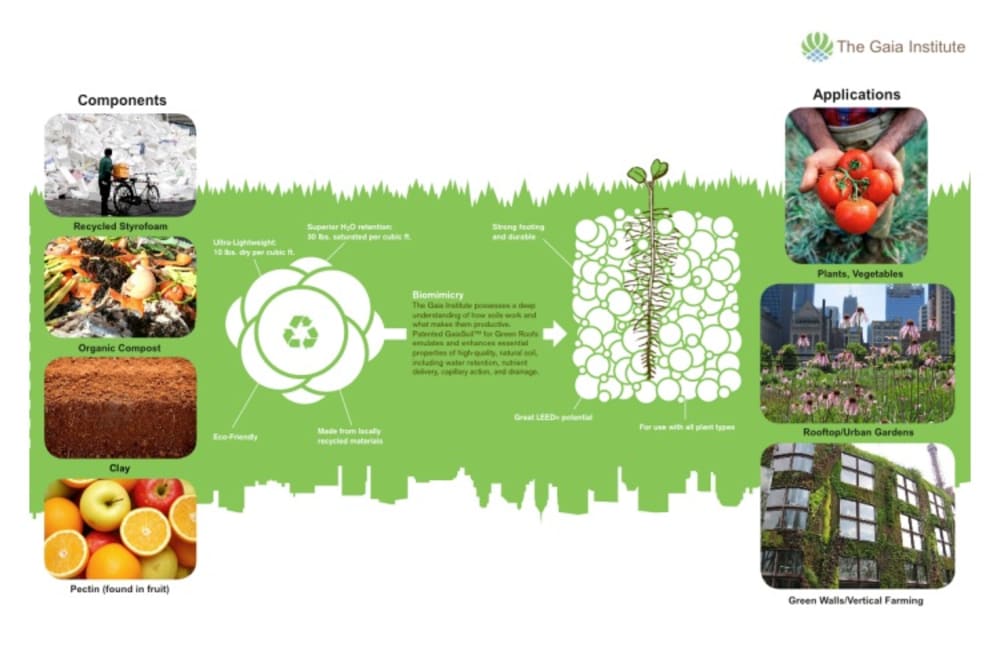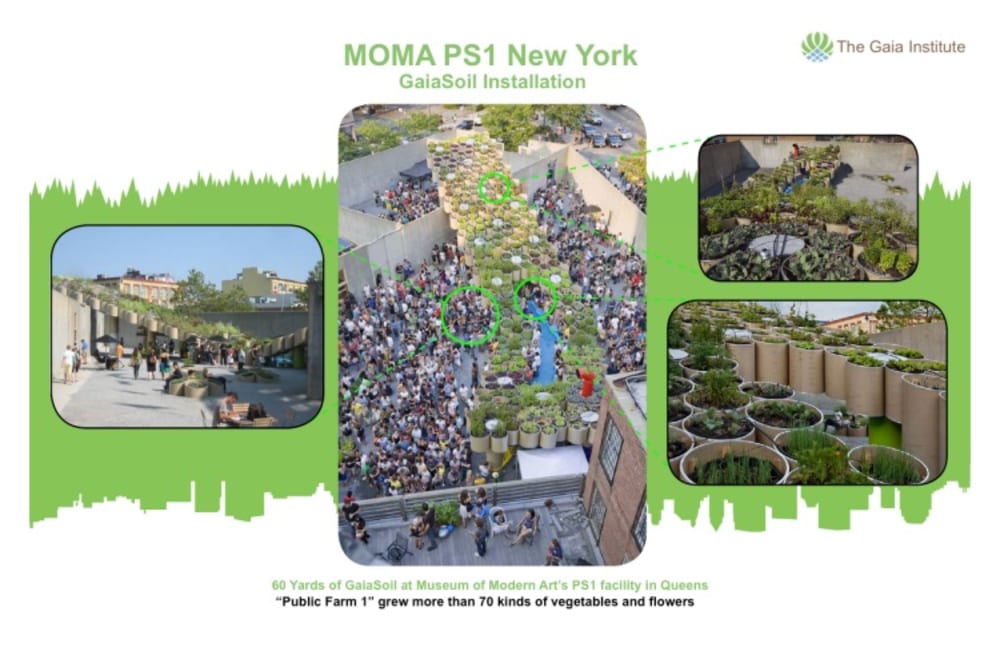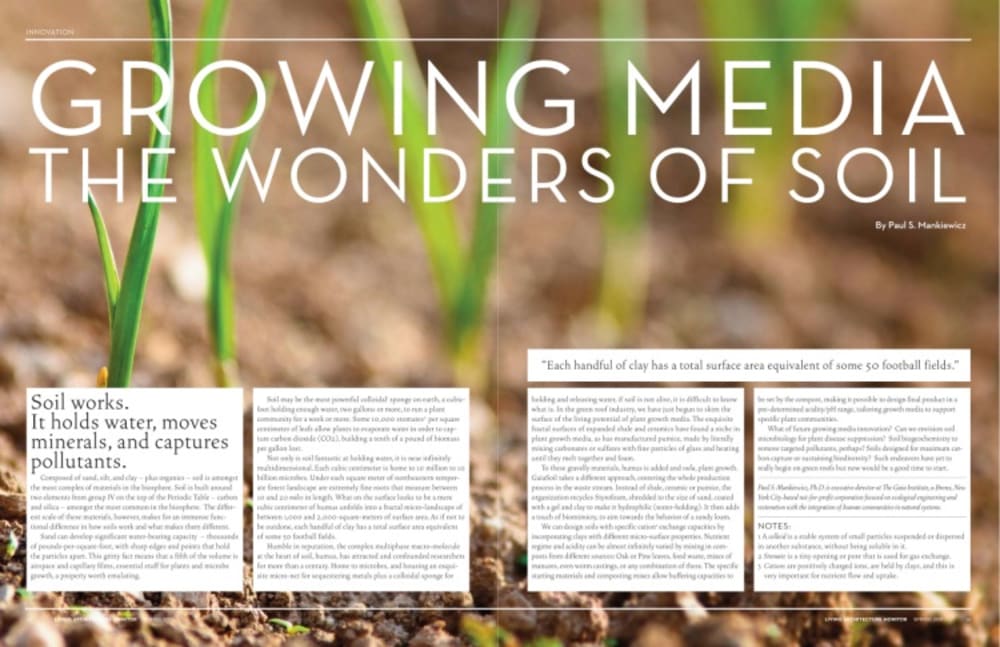The guiding principle that gave rise to GaiaSoil is the conversion of the waste stream into the growth and development of nature in cities.
GaiaSoil and the New Urban Ecology of Wastes-into-Resources is born from every garbage can, every refuse truck, and every landfill that contains just what we need to transform our cities and our lives for the better.
GaiaSoil as the base for buildings skins and roofs that clean our water and our air, recreate the forests and meadows, and produce tons of vegetables on every city block.
Take the waste stream and turn it into soil. Produce food in the soil for the huge markets in our central cities. Use the soil and rich plantings to clean water and air. Shade roofs and walls with leaves to evaporate water to cool the city. Grow the original plants of your area in the soil to restore the native ecosystems.
Where to get enough soil? It is already here for the making, in our superabundant waste stream.
GaiaSoil is made from waste Styrofoam plus composted organic waste. To make Styrofoam hold water, it is shredded and coated with a gel, pectin, that is also pulled out of the refuse pile of juice bars or health food stores by boiling discarded orange and apple peels.
What further distinguishes GaiaSoil, a patented product geared for mass implementation, is that it is ultra light weight, 30 pounds per cubic foot saturated. GaiaSoil holds twice its weight in water and can be blended and fine tuned for any plant nutrient requirements. Created directly from the waste stream, it is manufactured in a sustainable manner that does not require high heat or energy inputs.
Organic matter is approximately one-fifth of the waste stream. 2,500 tons each day of organic waste, approaching a million tons a year is created just in New York City alone. Styrofoam is approximately one-tenth of the waste stream by volume, and in some areas this plastic foam may make up a quarter of landfill space each year.
Repurposing what rolls down our streets in garbage trucks each day could cover 50,000 square feet of roof and wall space with native plants. In a year, 12% of New York City, for instance, could be covered with native wetlands, urban farms, and acres of water treatment green roofs, making our cities cooler by degrees.
Like this entry?
-
About the Entrant
- Name:Paul Mankiewicz
- Type of entry:teamTeam members:Dr. Paul S. Mankiewicz,The Gaia Institute
Drew Lang, Lang Architecture - Software used for this entry:N/A
- Patent status:patented








